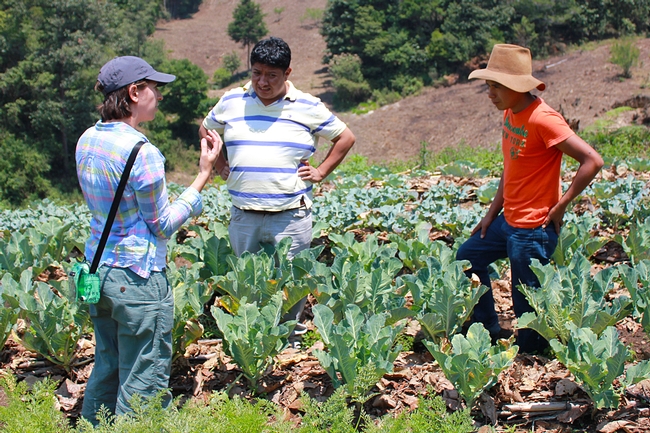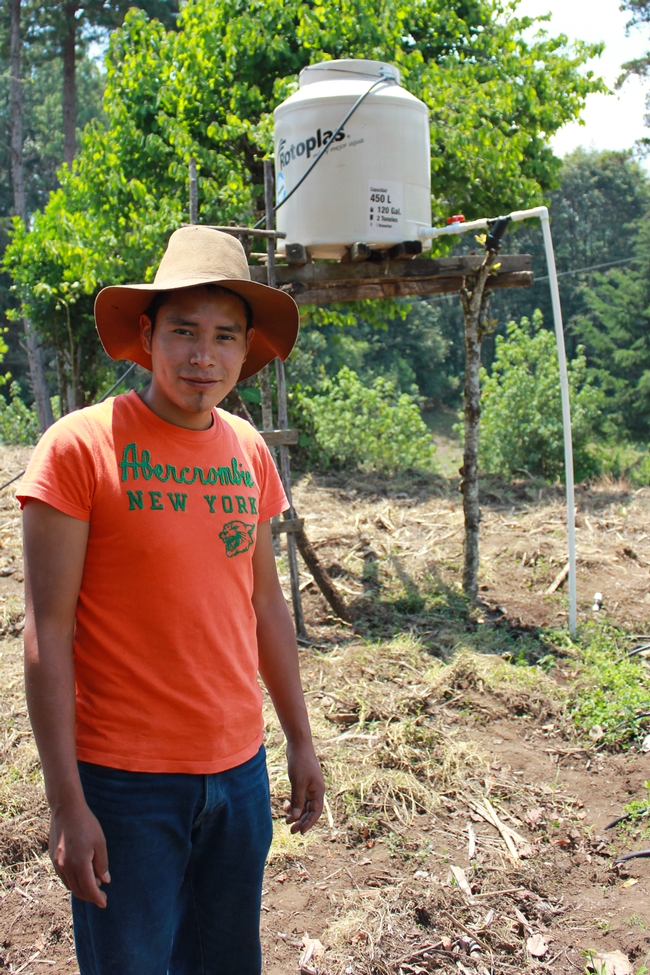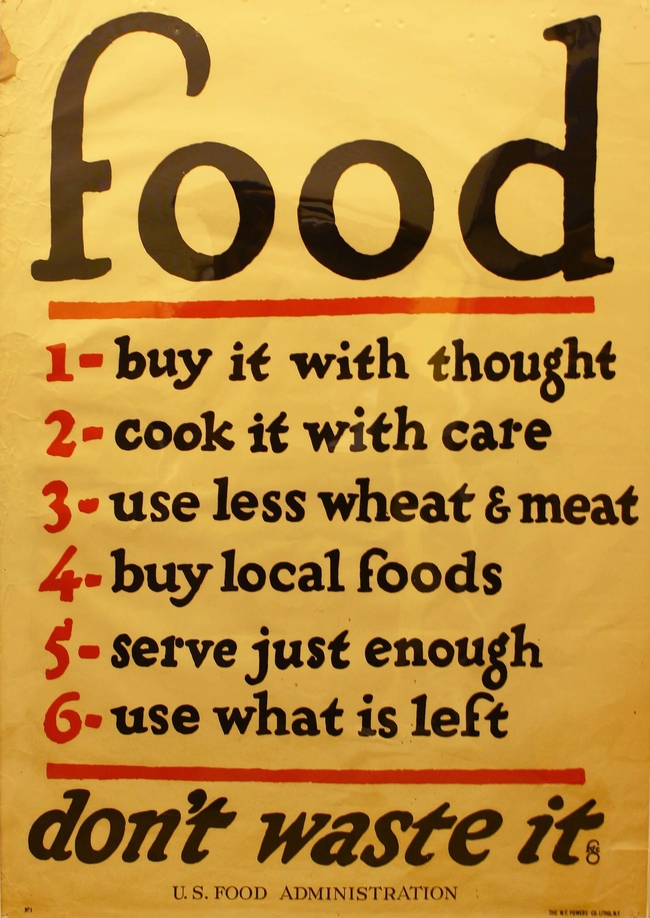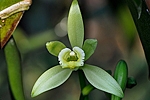Posts Tagged: conservation
More irrigation for climate-smart farming and food security in Guatemala
Connecting 9,000 rural households in Guatemala with improved water management and climate-smart agriculture strategies is the goal of a new project led by a team at UC Davis, to ultimately increase food security and reduce poverty in Guatemala's Western Highlands.
“The opportunity to impact so many farmers' lives on this scale is exciting,” said Beth Mitcham, director of the Horticulture Innovation Lab and a UC Cooperative Extension specialist in the UC Davis Department of Plant Sciences. “We're taking lessons learned from our previous research — in Guatemala, Honduras and Cambodia — and building a team to help more small-scale farmers apply our findings and successfully use these innovative practices.”
The new project is part of the U.S. government's global hunger and food security initiative, Feed the Future. The project represents an additional $3.4 million investment in the UC Davis-led Horticulture Innovation Lab by the U.S. Agency for International Development's mission in Guatemala.
The project's international team also includes representatives from Kansas State University; North Carolina Agricultural and Technical State University; the Centro de Paz Bárbara Ford in Guatemala; Universidad Rafael Landívar in Guatemala; and the Panamerican Agricultural School, Zamorano, in Honduras.
“The learning shared between these three U.S. universities and the universities in Honduras and Guatemala will be enriching for all of the institutions involved,” said Manuel Reyes, research professor at Kansas State University who is part of the team. “I find it satisfying that these academic institutions will be investing intellectually in marginalized groups in Guatemala's Western Highlands — and in turn, learning from them too.”
Helping youth envision a future in agriculture
By partnering with local youth groups and agricultural schools, the team will better prepare students for jobs in commercial agriculture and agricultural extension with knowledge of climate-resilient conservation and water management practices.
“Our local team is training youth as entrepreneurs, to see agriculture as an economic opportunity instead of just back-breaking work,” said Meagan Terry, UC Davis junior specialist who is managing the project in Guatemala for the Horticulture Innovation Lab. “They can envision a future in agriculture, with innovative ways to create value-added products or grow high-value crops for niche markets.”
As rainfall patterns vary with climate change, farmers in this region are expected to face increased competition for water. Practices such as rainwater harvesting, drip irrigation and conservation agriculture will become more necessary for small-scale farmers.
Climate-smart lessons from conservation agriculture, drip irrigation
In previous research, the Horticulture Innovation Lab has found that combining drip irrigation with conservation agriculture practices can successfully grow vegetables on small plots of land, without significant yield reductions. These practices improve soil structure, moisture retention and soil health.
Additionally, women farmers who participated in the Horticulture Innovation Lab studies in Cambodia, Honduras and Guatemala favored using these practices for another important reason: reduced labor in relation to controlling weeds, vegetable bed preparation and manual watering.
“I dream for many women, youth and their families, that their lives will be better off because of 'MasRiego' and the science behind this work,” Reyes said. “As for the research, we are learning how to improve this suite of practices so they can be tailor fitted globally. I am convinced that if this picks up, steep sloping lands can be farmed with the soil quality not being degraded — but even being enriched.”
These lessons, as well as findings from the program's “Advancing Horticulture” report about horticultural sector growth in Central America, lay the foundation for this new project.
A previous version of this article was published by UC Davis News Service and on the Horticulture Innovation Lab blog.
Curious about partnering with the Horticulture Innovation Lab? The Horticulture Innovation Lab builds partnerships between agricultural researchers in the United States and researchers in developing countries, to conduct fruit and vegetable research that improves livelihoods in developing countries. The program currently has three research grant opportunities for U.S. researchers: one focused on tomatoes, another on apricots, and a third on integrated crop-livestock systems.
It's time to get serious about food waste
Here's my take on food waste. It goes back in part to lessons I've learned from studying World War I, when the American government set food conservation goals (along with goals for local food production via Liberty - later Victory - Gardens). I'm a big proponent of both reducing food waste and producing more food in communities via school, home and community gardens. Big point: the World War I poster included in this post has advice we'd be well served to heed today.
"Food waste is both an ethical and environmental issue. It should concern us that we waste nearly 40 percent of the food we produce and purchase in this food-abundant nation.
For an interesting comparative statistic, consider this: our nation produced nearly 40 percent of the fruits and vegetables we consumed on the American home front during World War II in school, home, community and workplace gardens."
Period piece or photoshopped image?
It's an iconic poster from World War 1. Food...don't waste it. The image is regularly shared on Twitter and Facebook.
The original was produced in 1919 by the United States Food Administration, under the direction of the newly appointed food "czar" - Herbert Hoover.
The poster was reissued during World War II. It's been revised in recent years, by individuals and organizations interested in encouraging an ethos incorporating local foods and sustainability.
While I'm the UC Food Observer, I also dabble in the history of wartime poster art. I'm often asked if this is a contemporary mock-up made to look and feel vintage.
It's not a mock-up. It's the real deal, produced 95 years ago, with messages we should embrace today.
History of poster art
The First World War marked the first large-scale use of propaganda posters by governments. Posters, with easy-to-understand slogans and compelling images, made powerful propaganda tools. The government needed to shape public opinion, recruit soldiers, raise funds and conserve resources and mobilize citizens to important home front activities ... including gardening, food conservation and food preservation. In an era before television and widespread radio and movies, posters were a form of mass media. And they appeared in windows and were posted on walls everywhere, in as many languages as were spoken in this nation of immigrants.
If you want to dig a little deeper, the poster art of WWI was influenced by the La Belle Epoque - the beautiful era - named in retrospect, after the full horror of WWI had been revealed. The Art Nouveau movement in France and the rise of modern advertising were also important in shaping how posters were used during wartime. Technical improvements in printing, including a process called chromolithography, facilitated mass production of posters.
The original poster: Yes: 'buy local foods' is rule 4
The original poster has six rules that we'd be well served to follow today. The fourth rule - buy local foods - is somewhat of a surprise to people today, because the notion of buying local seems somewhat modern. But in WWI, the U.S. government encouraged the local production and consumption of food, in part, to free trains to more effectively ship troops and war materiel.
Tackling food waste through preservation: today's Master Food Preserver Program
UC Agriculture and Natural Resources (UC ANR) hosts a UC Master Food Preserver Program. The program teaches best practices on food safety and preservation to volunteers. The extensive training program prepares the volunteers to work in their community educating others on the safe practices of food preservation, including pickling, drying, freezing, canning and fruit preserves.
Thinking about gardening? Do we have resources for you!
UC ANR also has the UC Master Gardener Program, which fields more than 5,000 volunteers in communities across the state. The Master Gardener Program is a national program, housed at the land grant institution in each state, but it's also connected to the USDA. Free gardening resources are available here. Advice to grow by...just ask.
This is an excerpt of an article from a post on the UC Food Observer blog, used with permission.
Nothing plain about this UC Davis vanilla research
There is good news for those who are wild about all things vanilla – from ice cream to candy and even savory foods.
One of the world’s most popular flavors, vanilla comes from vanilla beans, which are grown in Madagascar, Mexico and other tropical regions. Unfortunately, vanilla farmers in these regions struggle to overcome low prices, a fungal disease epidemic, climate stress and environmental deterioration.
UC Davis scientist Sharman O’Neill is working to overcome some of these problems by carrying out genomic research to improve commercial vanilla plants and their sustainable cultivation in Madagascar.
Her efforts were recently recognized by the global food company General Mills, which named O’Neill the national winner of the General Mills Sustainability Challenge, a call for universities’ best ideas for reducing waste, encouraging sustainable consumption and using resources responsibly.
The honor comes with $200,000 to support the genomic vanilla research through O’Neill’s Vanilla Sustainability Project in UC Davis’ College of Biological Science.
The researchers aim to improve the genetic basis of the vanilla-bean crop so that vanilla farmers can overcome the problems posed by disease, climate stress, market uncertainties and environmental decline.
There is a lot at stake here because if these farmers abandon vanilla and change to other crops, the tropical forests, where the vanilla vines grow in compatible agroforestry systems, would likely be cut down. That would destabilize the critical habitat of innumerable plants and animals, including precious species of lemurs in northeastern Madagascar, the major vanilla-producing country.
"General Mills' goal is to maintain a strong, sustainable supply of high-quality vanilla beans," said Steve Peterson, director of sourcing sustainability at General Mills. "That's what this project is all about."
O’Neill’s vanilla research team involves an international group of scientists from the J. Craig Venter Institute in the United States; the French research center CIRAD on Réunion Island; the University of Antananarivo in Madagascar; the Instituto Nacional de Investigaciones Forestales, Agricolas y Pecuarias /SAGARPA in Mexico; and other international collaborators.
As part of the project, the scientists plan to use cutting-edge genomic sequencing and mapping technologies, in combination with traditional plant-breeding methods, to develop improved and new vanilla varieties that are hardier, more disease-resistant and offer enhanced flavor. A separate element of the project will also advance efforts to promote a more equitable model for sustainable vanilla cultivation with General Mills’ business partners.





